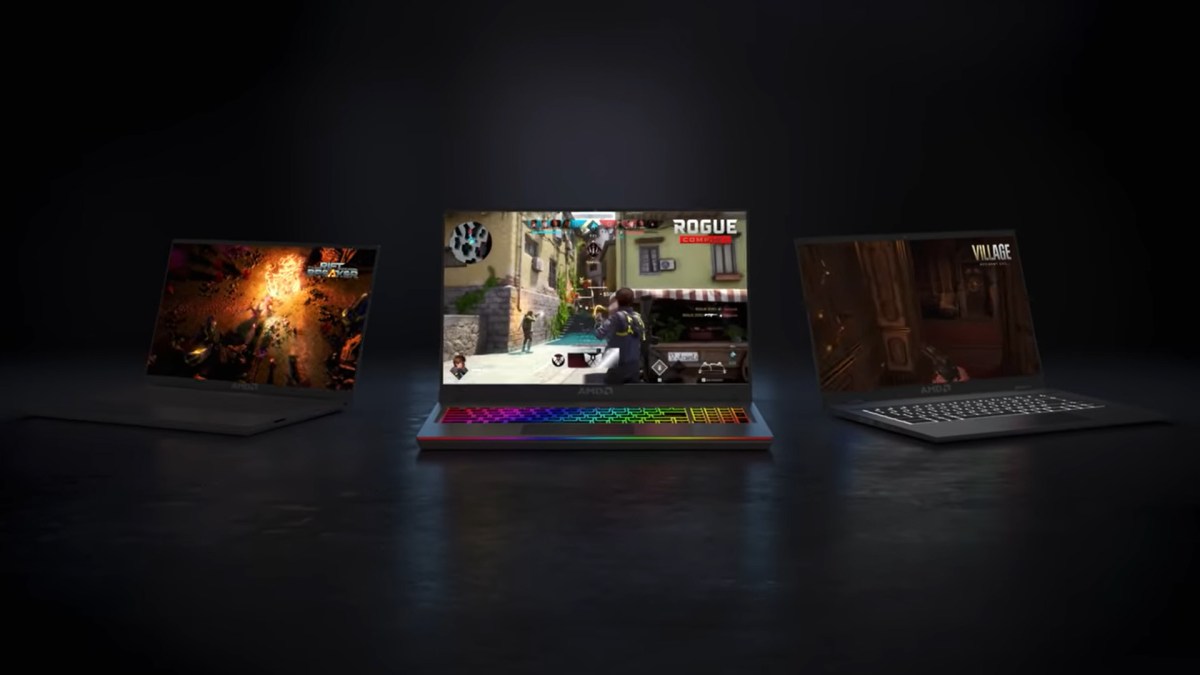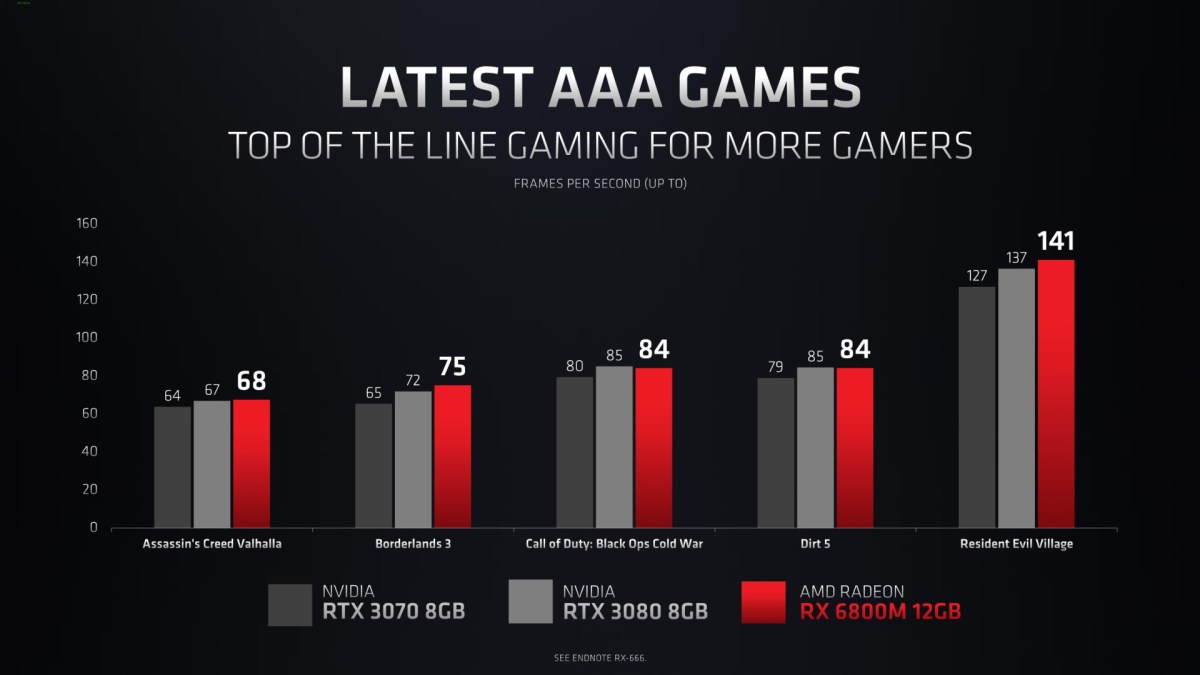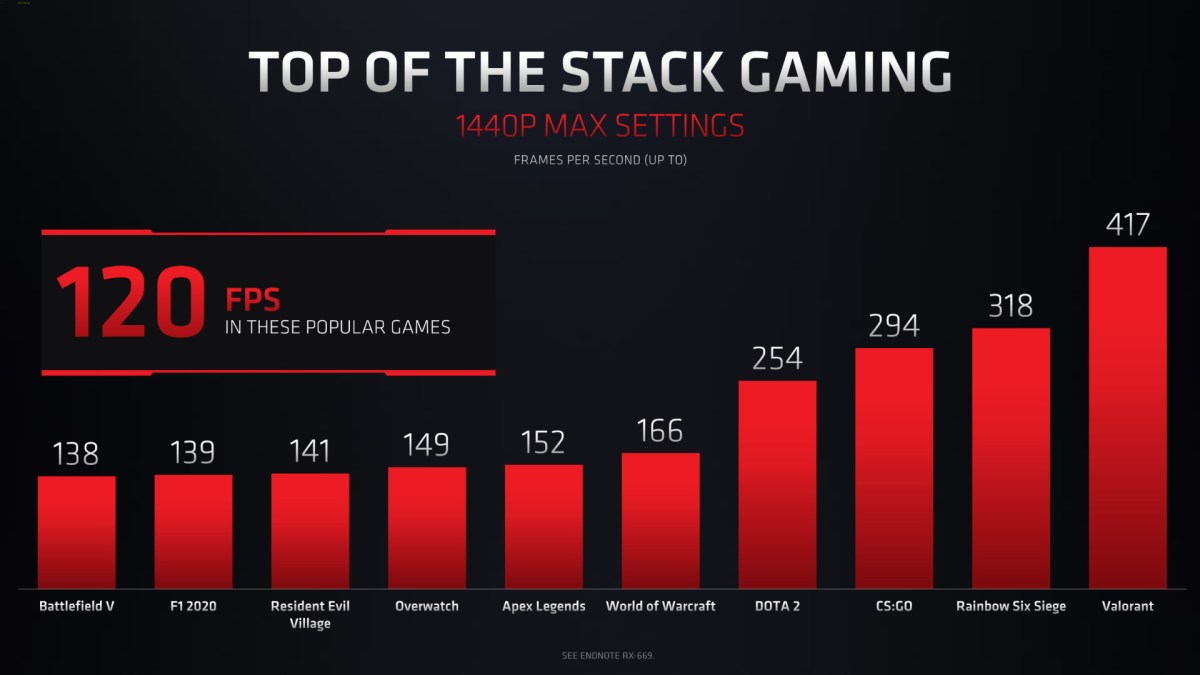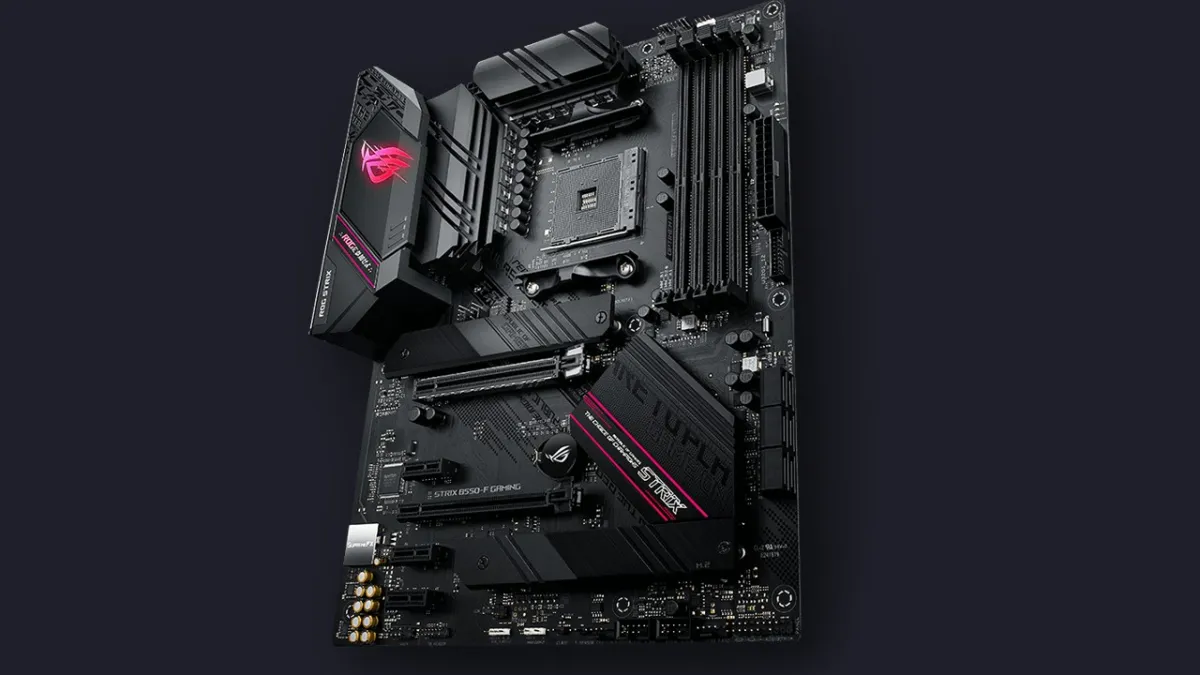AMD had a strong showing at Computex 2021. It revealed a new prototype 3D packaging method for its Ryzen CPUs that speeds up gaming performance, consumer-oriented APUs, and its DLSS competitor known as FidelityFX Super Resolution. If that wasn’t enough already, there’s also major news that RDNA 2 mobile graphics cards for the Radeon RX 6000 Series will power AMD laptops.
These all-AMD laptops (in regards to the chips, not the full systems) will target 1080p and 1440p gaming. Desktop benchmarks for RDNA 2 showed that the architecture excelled on lower resolutions compared to Nvidia’s Ampere, so these might just shake up Nvidia’s generally dominant hold on the mobile gaming market. AMD also has the advantage of pairing its GPUs with its CPUs for additional frames and better power efficiency through the employment of technologies like Smart Access Memory (SAM) and Smart Shift.
AMD RX 6000 Series mobile specs
As for the specs, they are quite different from what you may have previously seen on the desktop cards. That’s no surprise though, as Nvidia tends to abide by a similar practice. Notably, the naming is a little less confusing for the AMD RX 6000 Series mobile laptop GPUs.
| RX 6800M | RX 6700M | RX 6600M | |
| GPU | Navi 22 | Navi 22 | Navi 23 |
| Compute Units & Ray Accelerators | 40 | 36 | 28 |
| Game Clock | 2300MHz | 2300MHz | 2177MHz |
| TDP | 145W | 135W | 100W |
| GDDR6 | 12GB | 10GB | 8GB |
| Memory Interface | 192-bit | 160-bit | 128-bit |
| Infinity Cache | 96 MB | 80 MB | 32 MB |
Some of the takeaways are that these GPUS will use a lot less power, be clocked lower, and have less memory than the desktop counterparts. Despite this, the AMD Radeon RX 6000 mobile series should offer some solid laptop gaming.
Of course no product showcase would be complete without game benchmarks, so AMD provided some those as well. These are AMD numbers, so they could be somewhat inflated by the magic of PR, but this at least gives us a general idea of what to expect.
As the final part of the announcement, AMD also introduced a new laptop design standard for laptop manufacturers to abide by. AMD Advantage pairs up components and displays to ideal specifications to allow for better performance. It also means less hidden cost-cutting measures.
You’ll be able to pick up one of these AMD laptops from brands like HP Omen, ASUS ROG, and probably the rest of the usual crew. We certainly welcome the added competition to the rapidly expanding laptop gaming space. More importantly, you’ll actually be able to get one of these laptops since they aren’t very attractive investments for cryptominers. For more information on these AMD laptops and the RDNA 2 mobile architecture, check out the official announcement.






